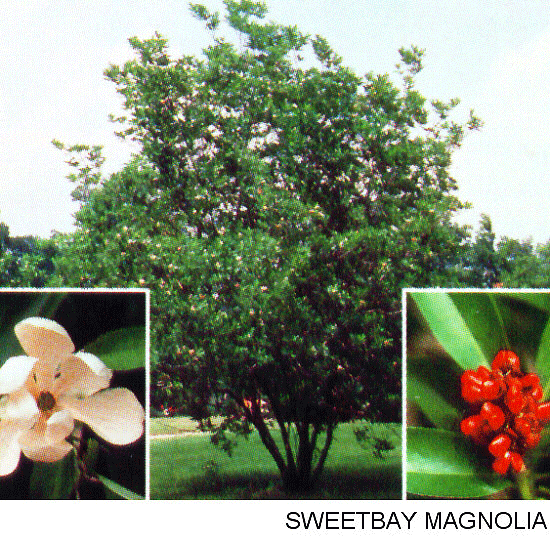
|
Volume XVII, Issue 7 - February 12 - February 18, 2009
|
|
Columns Reviews |

An Underrated Native
Sweet bay magnolia lives up to its name, and it isn’t picky
The native sweet bay magnolia is underrated. It resists insects and diseases and develops an attractive canopy of light green to olive green foliage. It can be grown as a small tree or as a large shrub depending on how you prune it.
The sweet bay magnolia derives its name from the large and very aromatic flowers it produces in late spring. The aroma of its flowers can reach several hundred feet away on a warm day. In late summer and early fall, the flowers turn into cones with bright red seeds protruding from the side.

![]() This plant is tolerant to both soggy soils and sandy dry soils. Its native habitat is wet, boggy areas, along the edge of swamps or ponds and as an under-story tree in wet areas. However, researchers have found that it will also thrive in hot dry conditions — if well established and irrigated as needed during the first year following transplanting. Thereafter, it will tolerate the driest conditions under our climate.
This plant is tolerant to both soggy soils and sandy dry soils. Its native habitat is wet, boggy areas, along the edge of swamps or ponds and as an under-story tree in wet areas. However, researchers have found that it will also thrive in hot dry conditions — if well established and irrigated as needed during the first year following transplanting. Thereafter, it will tolerate the driest conditions under our climate.
Sweet bay magnolia tends to develop multiple stems, but it can be trained to grow as a small-single stem tree. However, training should not begin until after the tree has been allowed to grow in place for at least two years. From several stems, select the straightest and prune away all other stems as close to the ground as possible. If sprouting occurs, remove the sprouts when they are only a few inches tall.
If none of the stems of the sweet bay magnolia are desirable for growing a single stem tree, prune away all of the branches within an inch of the ground in early April. Allow the stump to grow sprouts for at least two months. In early to mid June, select the straightest and most vigorous sprout and prune away all other sprouts. During the first and second season, prune away other undesirable sprouts.